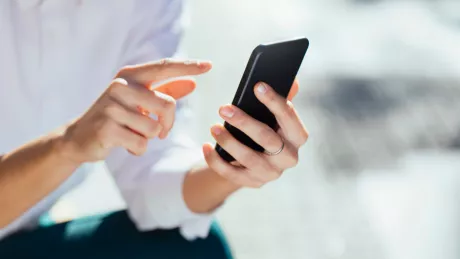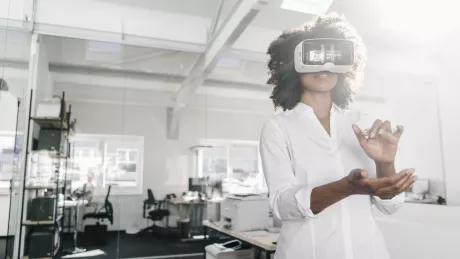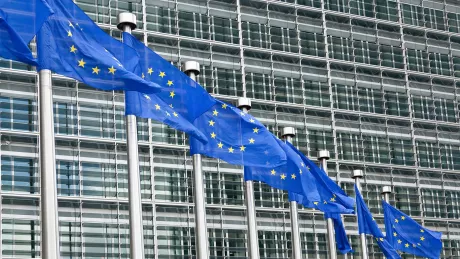
The smartphone as an ID card
published on 28.10.2020
From 2021, citizens are to be able to use their ID card with its online ID function on their smartphone – and, looking even further ahead, together with their car keys, driving licence and health card. The OPTIMOS 2.0 research project has paved the way for this while at the same time ensuring the security of sensitive data.
Smartphones are conquering more and more areas of life
Smartphones are digital all-round talents and are already replacing many of our everyday objects: city maps, cameras or the plastic cards we use to pay for something. One thing is certain, these digital helpers are always at hand and are being used in more and more areas of our lives. The automotive industry, for instance, has long been working on replacing the physical vehicle key. The mobile phone is now to be used by drivers to open, close and start their cars. The key rights can also be transferred to others – for instance, to a parcel carrier who can safely deposit the delivery in the trunk of a car.
In the future, the online ID card could very well no longer be found in the holder’s wallet as a classic card, but instead be hidden inside a smartphone ready for use no matter where, no matter when.
Security is crucial for mobile identities
How can this work and, more importantly, be secure? In order to use services like these, you first need a digital identity. This can be created by entering simple access data, such as a username and password. However, when it comes to sensitive data and access options, such as online identification, this is of course not sufficient. After all, smartphones are constantly exposed to the threat of cyberattacks.
That’s why Bundesdruckerei has launched the OPTIMOS 2.0 project together with the Federal Ministry of Economics and Energy (BMWi), Samsung, Telekom as well as a Fraunhofer Institute and the Federal Office for Information Security (BSI). The aim of this joint project was secure online authentication on websites and in apps using smartphones.
OPTIMOS 2.0 ensures optimum security
OPTIMOS 2.0 provides service providers with the technology and infrastructure needed for secure authentication. This will enable them to offer mobile identities with the official ‘substantial’ level of assurance according to the EU regulation on electronic identification and trust services for electronic transactions (eIDAS). At the same time, the mobile ID can also be used for services based on near field communication (NFC) technology. This is carried out by holding the mobile device close to another object, such as the lock on a hotel room door.
How the ID card gets onto the smartphone
NFC technology is also used to transfer the ID card with its online ID function to the smartphone. This is how it works: Just like the online ID card, the majority of smartphones now contain a security chip, the so-called Secure Element. All security-relevant information, such as passwords, is encrypted and stored there.
The future could look like this: If the ID card holder wants to transfer their identity data to the chip in the smartphone, they could use the ID card app to check whether the mobile phone is compatible. The ID card would then be held to the back of the smartphone, the identity would be confirmed and the mobile ID would be securely stored on the Secure Element. The ID card would then be ready for use on the smartphone.
Using a smartphone for dealings with public authorities from the comfort of home?
Citizens could then open a bank account directly with their smartphone, for example. Or, sitting at home, they could make use of the eGovernment services offered by various public authorities. The mobile identity is set to be introduced in 2021. An important goal of the OPTIMOS 2.0 project was to develop a so-called Trusted Service Manager (TSM), which provides interfaces with all relevant providers and mobile network operators.
From the driving licence to the health card – A vast range of possibilities
Many other services will become possible with digital identities according to the highest security standards. In the OPTIMOS 2.0 follow-up project ONCE, Bundesdruckerei is currently investigating the possibility of bringing the driving licence onto the smartphone. The health insurance card should also be available on mobile devices in the next few years. In a project funded by the Federal Ministry of Health, Bundesdruckerei is currently working on securely transferring the electronic health card to mobile phones.











